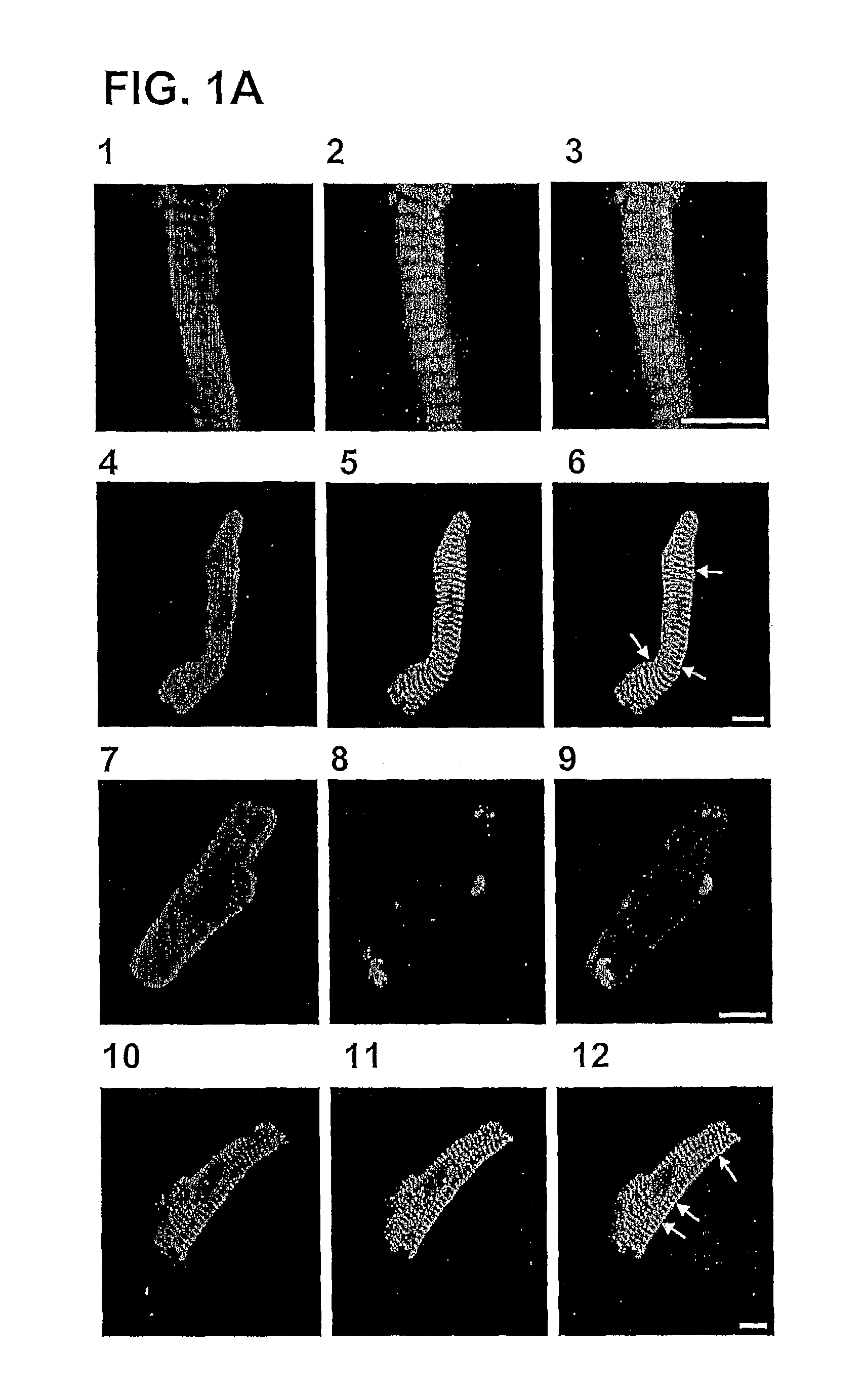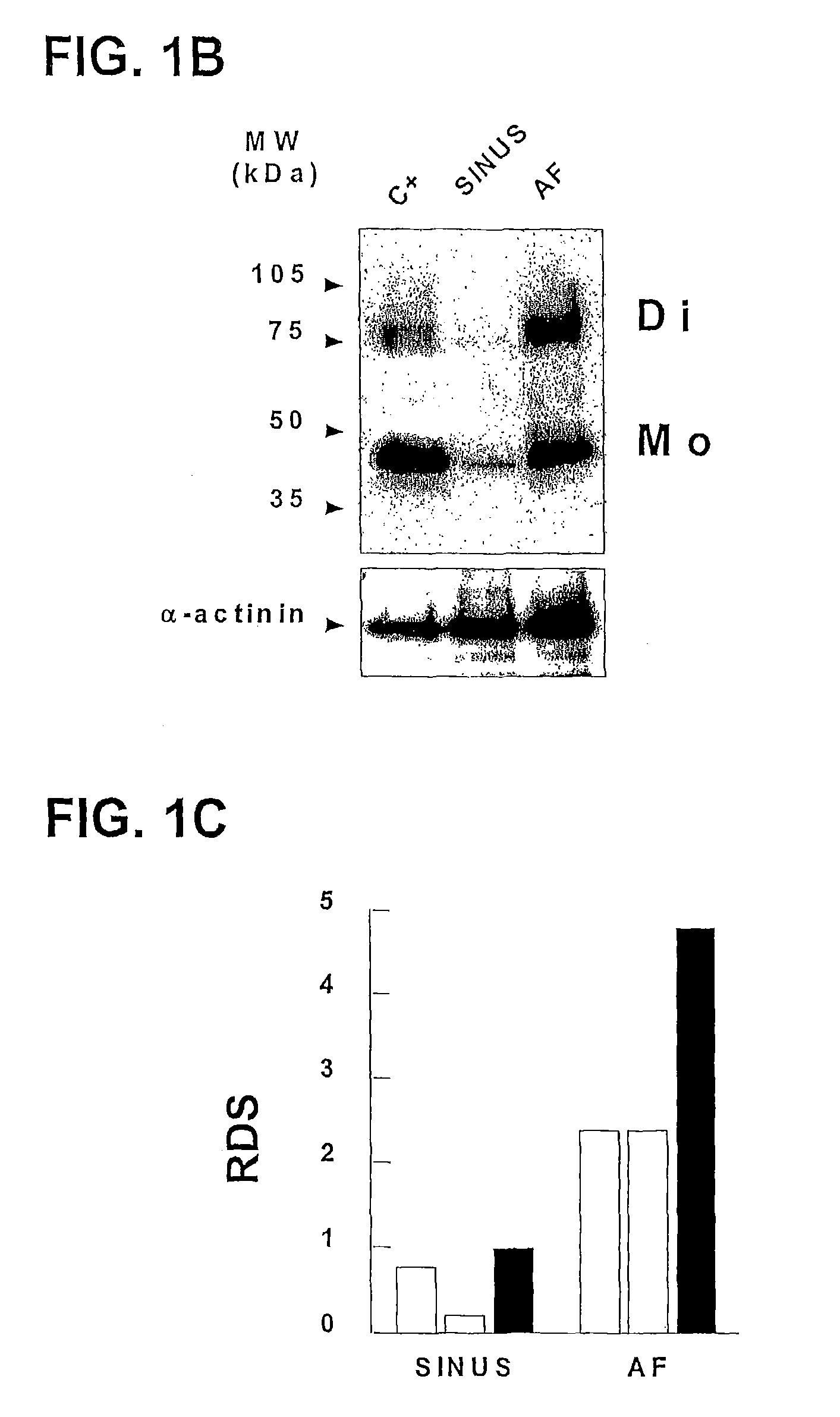Compounds for the treatment of auricular fibrillation
a technology for auricular fibrillation and compounds, applied in the field of compounds for the treatment of auricular fibrillation, can solve the problems of increasing incidence and prevalence, affecting the treatment effect, and causing substantial morbidity and mortality
- Summary
- Abstract
- Description
- Claims
- Application Information
AI Technical Summary
Benefits of technology
Problems solved by technology
Method used
Image
Examples
Embodiment Construction
Detailed Description of the Drawings
[0042]FIG. 1A shows freshly isolated human right atrial myocytes that were double stained with anti-A2A receptor (panels 1, 4, 7 and 10) and anti-myosin (2), anti-α-actinin (5), anti-connexin-43 (8) or anti-RyR (11). Superimposition of the double immunofluorescence images (panels 3, 6, 9 and 12) revealed colocalization of the A2A receptor with α-actinin and overlapping distribution of A2A receptor with the ryanodine receptor (RyR). FIG. 1B shows cell membranes from transiently transfected HEK cells with human A2A receptor (positive control, C+) and human atrial heart membranes obtained from individuals with sinus rhythm (SINUS) or with atrial fibrillation (AF) resolved by SDS-PAGE and immunoblotted using a rabbit anti-A2A receptor antibody. “Di” means dimer and “Mo” means monomer. FIG. 1C shows the Relative Densitometric Scan (RDS) of immunoblot of FIG. 1B. The total amount of A2A receptor (monomer plus dimer) is shown in black bars. Relative amou...
PUM
| Property | Measurement | Unit |
|---|---|---|
| membrane potential | aaaaa | aaaaa |
| diameter | aaaaa | aaaaa |
| pH | aaaaa | aaaaa |
Abstract
Description
Claims
Application Information
 Login to View More
Login to View More - R&D
- Intellectual Property
- Life Sciences
- Materials
- Tech Scout
- Unparalleled Data Quality
- Higher Quality Content
- 60% Fewer Hallucinations
Browse by: Latest US Patents, China's latest patents, Technical Efficacy Thesaurus, Application Domain, Technology Topic, Popular Technical Reports.
© 2025 PatSnap. All rights reserved.Legal|Privacy policy|Modern Slavery Act Transparency Statement|Sitemap|About US| Contact US: help@patsnap.com



